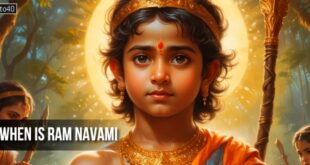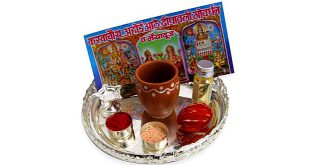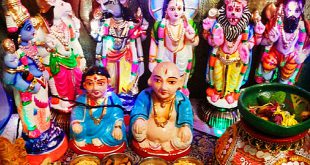The term Arihanta is made up of Ari, meaning enemies, and hant, meaning destroyer. Consequently, Arihanta means destroyer of enemies. In this case the term enemies refers to passions such as anger, greed, ego, and deceit which are internal enemies, because they defile the true nature of the soul. A soul can only reach the state of Arihanta by overcoming all its inner enemies. Once a soul has shed all of its four defiling (ghati) karmas namely Jnanavarniya (Knowledge obscuring) Karma, Darshanavarniya (Perception obscuring) karma, Mohniya (Deluding) Karma and Antaraya (Obstructive) Karma, it becomes an Arihanta and attains perfect knowledge (Kevaljnana), perfect perception (Kevaldarshana), and infinite power (Ananta Virya) and it becomes a passionless (vitragi). Arihantas are divided into two categories: Tirthankar and Ordinary. Arihantas who have attained Tirthankar Näm Karma become Tirthankaras while the rest of them become Ordinary Arihants. There are twenty-four Tirthankaras during every half time cycle. These Tirthankaras reinstate the Jain Sangh (four-fold Jain Order) consisting of Sädhus (monks), Sädhvis (nuns), Shrävaks (male householders), and Shrävikäs (female householders). The first Tirthankar (Arihanta) of this time period was Lord Rushabhdev, and the twenty-fourth and last Tirthankar was Lord Mahävira, who was lived from 599B.C. to 527B.C. Tirthankaras are also called Jinä (conqueror of inner passions) from which the term Jain, follower of a Jinä, is derived. At the time of Arihanta’s nirvän (death), the remaining four non-defiling (aghati) karmas such as Nam (Physique determining) Karma, Gotra (Status determining) Karma, Vedniya (Feeling producing) Karma and Ayushya (Age span determining) Karma, are destroyed. Ordinary Arihants are those souls who attain salvation, but do not possess Tirthankar Nama Karma and hence, do not establish the Jain Order. After attaining salvation they are called Siddhas. Since Siddhas have attained ultimate liberation, we do not have access to them. However, Arihantas offer us spiritual guidance during their lifetime. In order to show our special reverence for their teachings, we bow to them first, hence the first verse of the Navkar Mantra. Currently, as per scriptures except at Mahavideh kshetra, there are no Arihantas. The last Arihant was Jambuswami. According to the Agams (Jain scriptures) there will be no more Arihantas during the remaining period of the current half-time cycle.
Check Also
Bohag Bihu Festival Information: Assam Festival Rongali Bihu
Bohag Bihu Festival Information: The Rongali Bihu is the most important among all the three …
 Kids Portal For Parents India Kids Network
Kids Portal For Parents India Kids Network






